Part 8: The 2010 Wilson Research Group Functional Verification Study
Language and Library Trends
This blog is a continuation of a series of blogs, which present the highlights from the 2010 Wilson Research Group Functional Verification Study.
In my previous blog, I focused on some of the 2010 Wilson Research Group findings related to testbench characteristics and simulation strategies. In this blog, I present design and verification language trends, as identified by the Wilson Research Group study.
You might note for some of the language and library data I present, the percentage sums to more than one hundred percent. The reason for this is that some perticipant’s projects use multiple languages and multiple methodologies.
Design Languages
Let’s begin by examining the languages used for design, as shown in Figure 1. Here, we compare the results for languages used to design FPGAs (in grey) with languages used to design non-FPGAs (in green).
Figure 1. Languages used for design
Not too surprising, we see that VHDL is the most popular language used for the design of FPGAs, while Verilog and SystemVerilog are the most popular languages used for the design of non-FPGAs.
Figure 2 shows the trends in terms of languages used for design, by comparing the 2007 Far West Research study (in blue) with the 2010 Wilson Research Group study (in green), as well as the projected design language adoption trends within the next twelve months (in purple). Note that the design language adoption is declining for most of the languages with the exception of SystemVerilog whose adoption is increasing.
Figure 2. Trends in languages used for design
Verification Languages
Next, let’s look at the languages used for verification (that is, languages used to create simulation testbenches). Figure 3 compares the results between FPGA designs (in grey) and non-FPGA designs (in green). 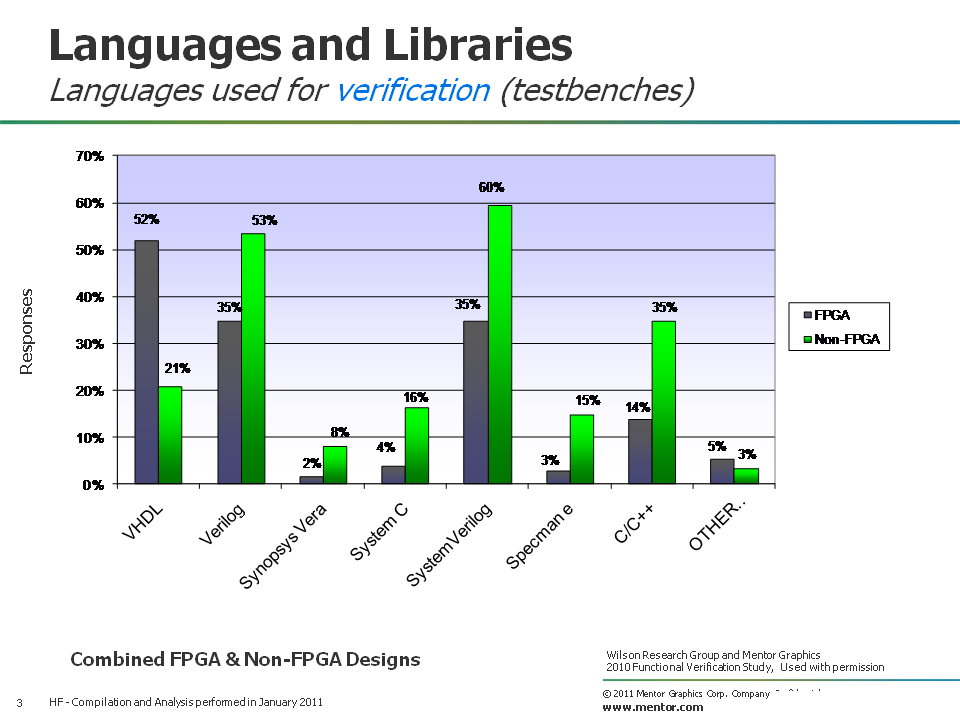
Figure 3. Languages used in verification to create simulation testbenches
And again, it’s not too surprising to see that VHDL is the most popular language used to create verification testbenches for FPGAs, while SystemVerilog is the most popular language used to create testbenches for non-FPGAs.
Figure 4 shows the trends in terms of languages used to create simulation testbenches by comparing the 2007 Far West Research study (in blue) with the 2010 Wilson Research Group study (in green), as well as the projected language adoption trends within the next twelve months (in purple). Note that verification language adoption is declining for most of the languages with the exception of SystemVerilog whose adoption is increasing.
Figure 4. Trends in languages used in verification to create simulation testbenches
Now, let’s look at methodology and class library adoption. Figure 5 shows the future trends in terms of methodology and class library adoption by comparing the 2010 Wilson Research Group study (in green) with the projected adoption trends within the next twelve months (in purple). Previous studies did not include data on methodology and class library adoption, so we are unable to show previous trends.
Figure 5. Methodology and class library future trends
The study indicates that the only methodology adoption projected to grow in the next twelve months are OVM and UVM.
Assertion Languages and Libraries
Finally, let’s examine assertion language and library adoption, as shown in Figure 6. Here, we compare the results for FPGA designs (in grey) and non-FPGA designs (in green).
Figure 6. Assertion language and library adoption
SystemVerilog Assertions (SVA) is the most popular assertion language used for both FPGA and non-FPGA designs.
Figure 7 shows the trends in terms assertion language and library adoption by comparing the 2007 Far West Research study (in blue) with the 2010 Wilson Research Group study (in green), as well as the projected adoption trends within the next twelve months (in purple). Note that the adoption of most of the assertion languages is declining, with the exception of SVA whose adoption is increasing.
Figure 7. Trends in assertion language and library adoption
In my next blog, I plan to focus on the adoption of various verification technologies and techniques used in the industry, as identified by the 2010 Wilson Research Group study.
Comments
Comments are closed.
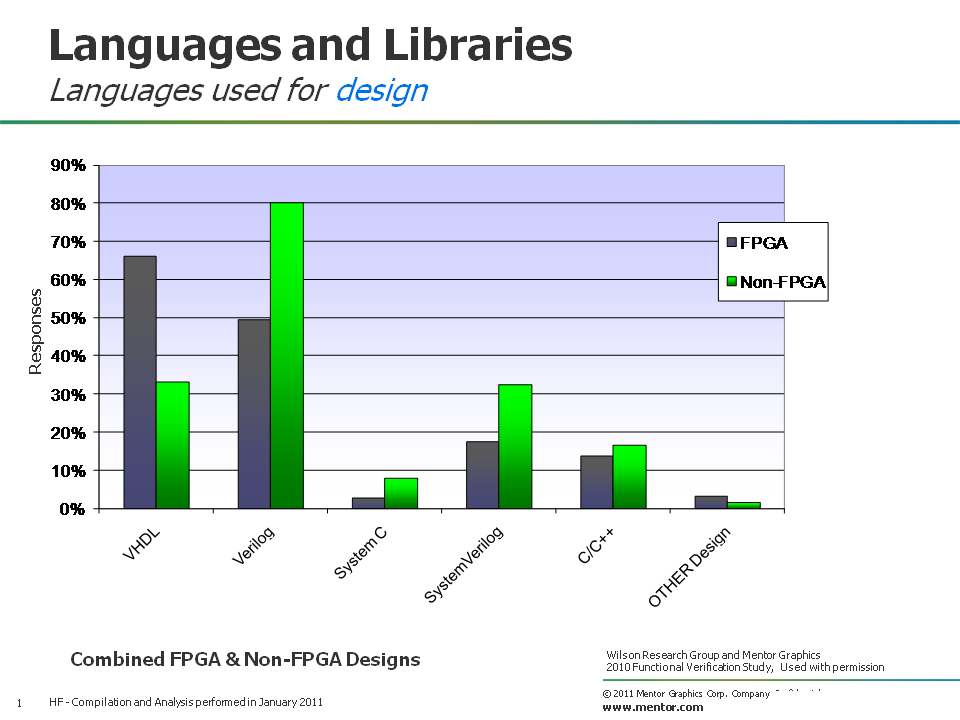
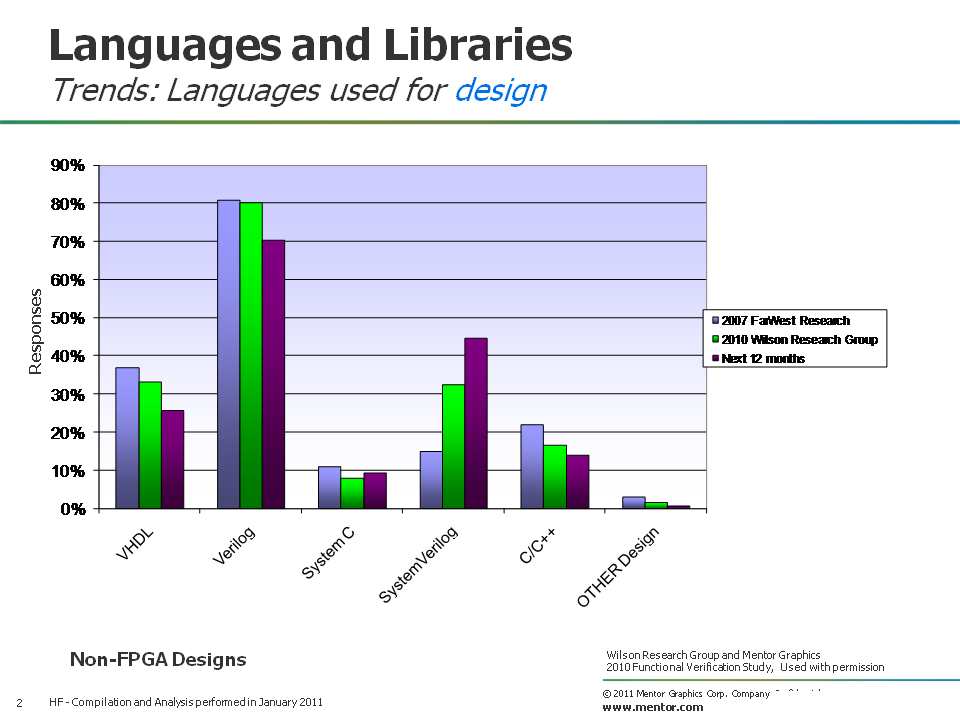

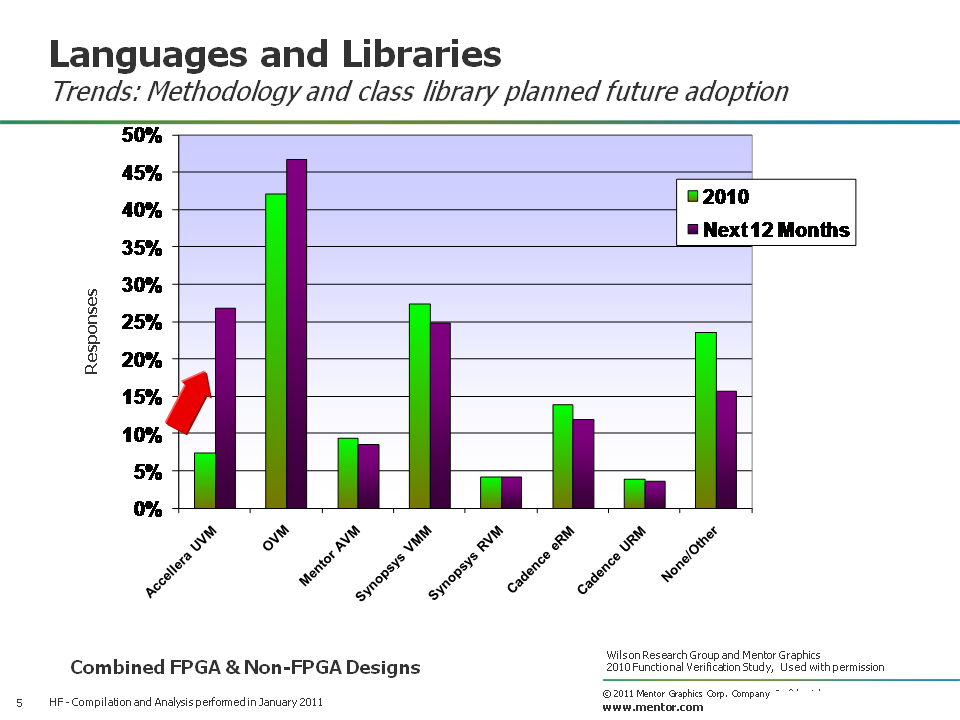

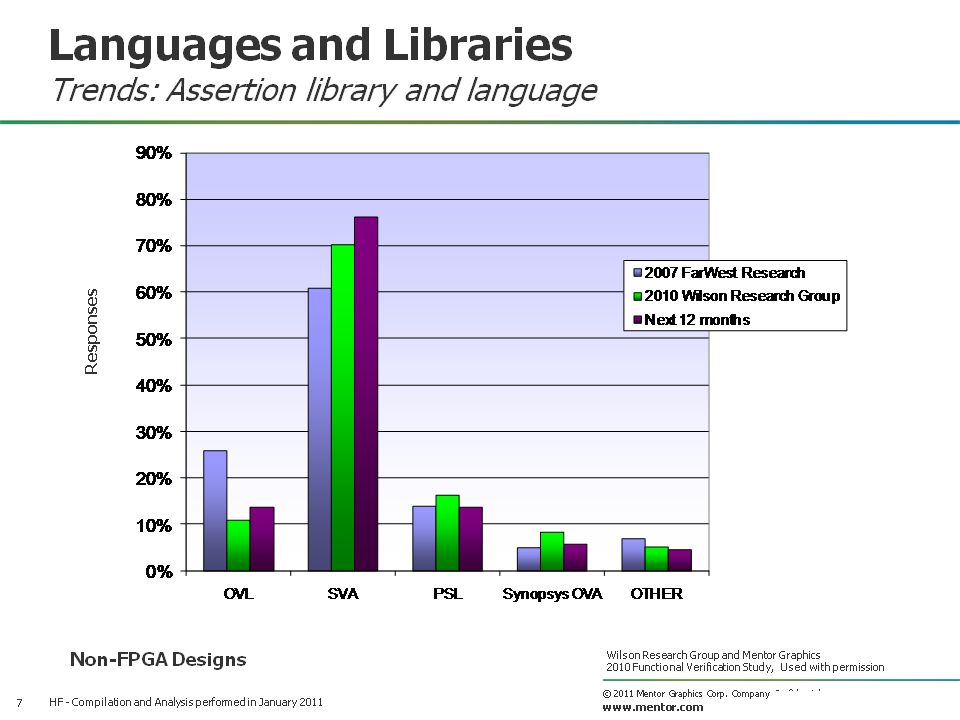

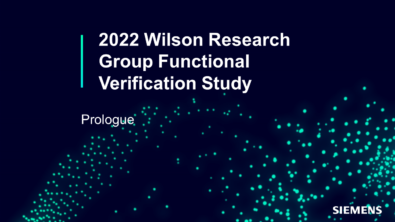

Very good! Can you focus on FPGA different with non-FPGA and how to use VHDL language design or develop? many thanks and best regards!
Hi, I can extract the data with a focus on either combined FPGA and non-FPGA, or FPGA only, or non-FPGA only. I will be presenting a lot of the data in this series of blogs with different views. Thanks!